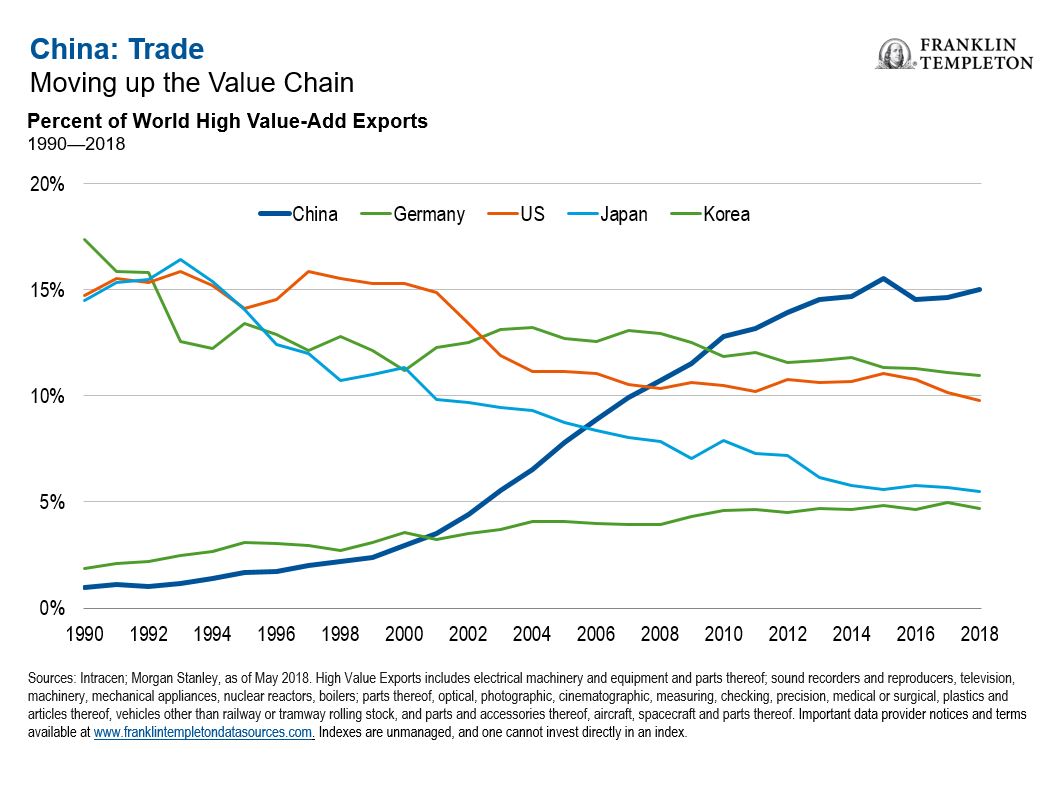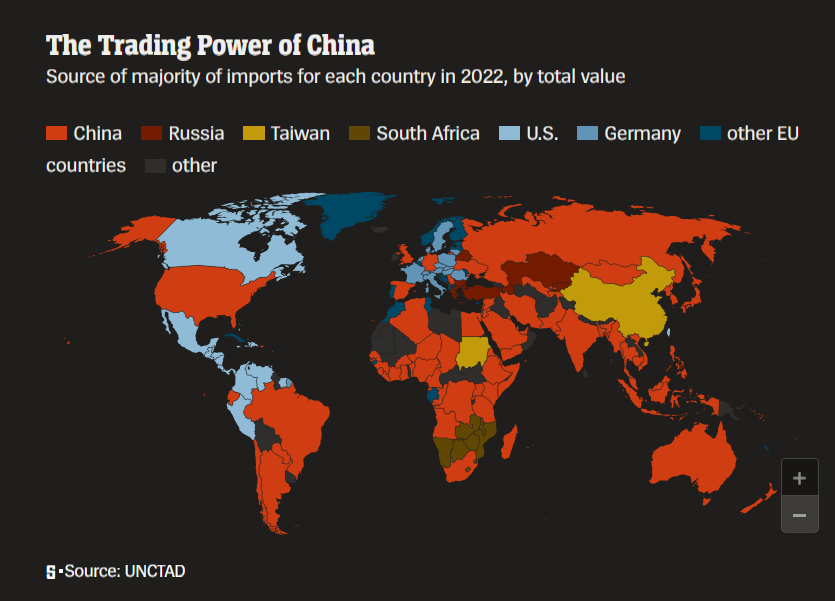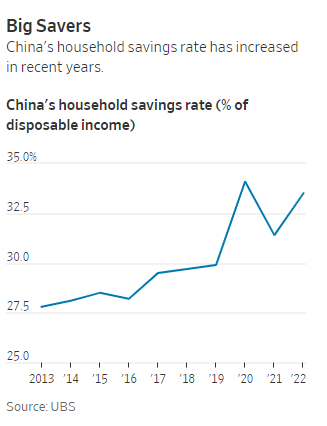China used to be the world’s factory floor where most of the items produced were considered to be cheap and low quality. That is no longer the case. As with other emerging markets that have moved up the value to become developed countries, China is also moving up the value chain. So that means the country is making high value goods such electric cars, buses, appliances, chips, robots, etc. instead of things like cheap toys, household items, plastic items, plates, cups, etc. Below is example of a recent article on how China is ahead of the US in electric buses:
The U.S. Has a Fleet of 300 Electric Buses. China Has 421,000, Bloomberg
It is not just electric buses. The country is increasingly becoming an exporter of high-value items including drones, 5G network gear, cell phones, etc.
The following chart shows a comparison of high value-add goods exported by China vs. other countries:
Click to enlarge
Source:From Imitation to Innovation: Emerging Markets’ Technology Journey, Franklin Templeton Investments
From the above piece:
More than half of investors surveyed considered Chinese exports to be “cheap” (53%), with some also describing them as “poorly regulated” (38%) and “low quality” (29%). 2By comparison, most respondents described UK exports as “well-regulated” (62%) and “reliable” (57%), whilst Japanese products were considered to be both “high quality” (58%) and “innovative” (52%).3
Where once emerging markets economies achieved initial success as producers of cheap home appliances or electronic parts, for example, many of these economies have now set their sights further up the value chain. Indeed, with China and South Korea as leading examples, emerging markets’ share of global high value-add exports has risen dramatically since the start of the 21st century, rendering this impression of survey participants out of step with reality.
The full article is worth a read.



